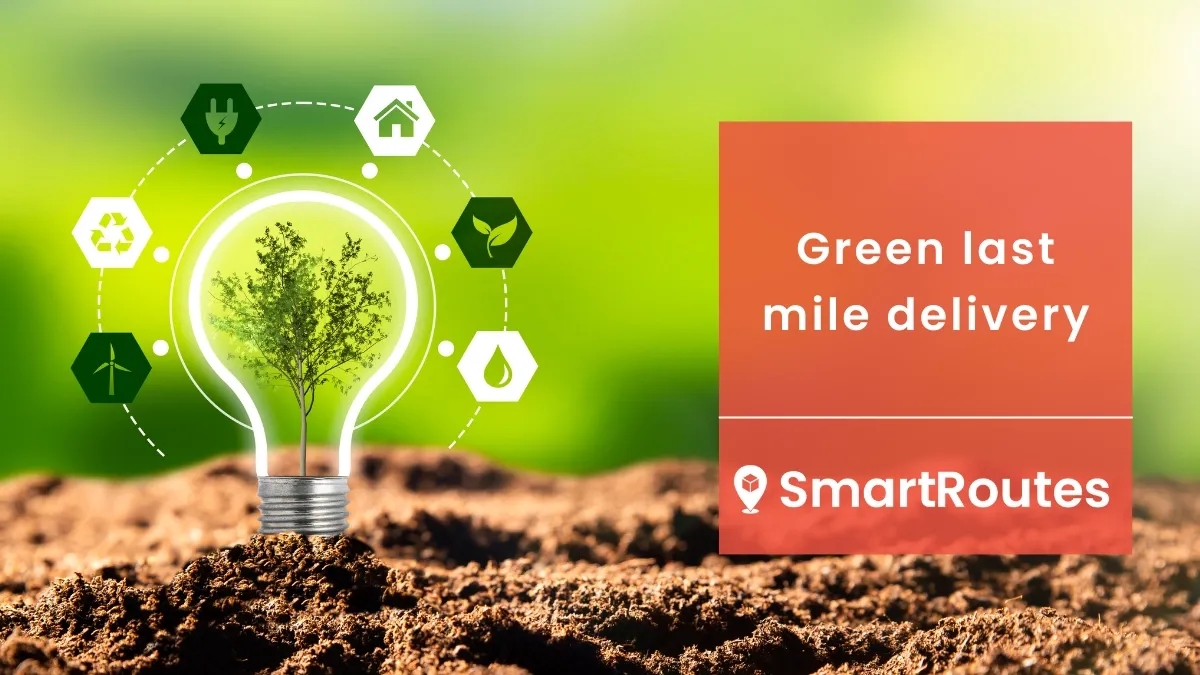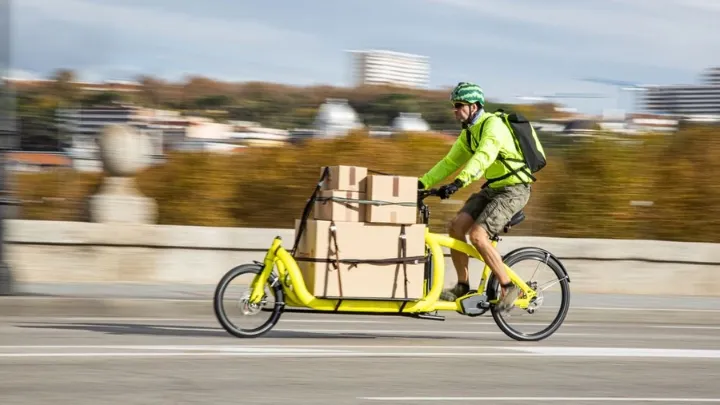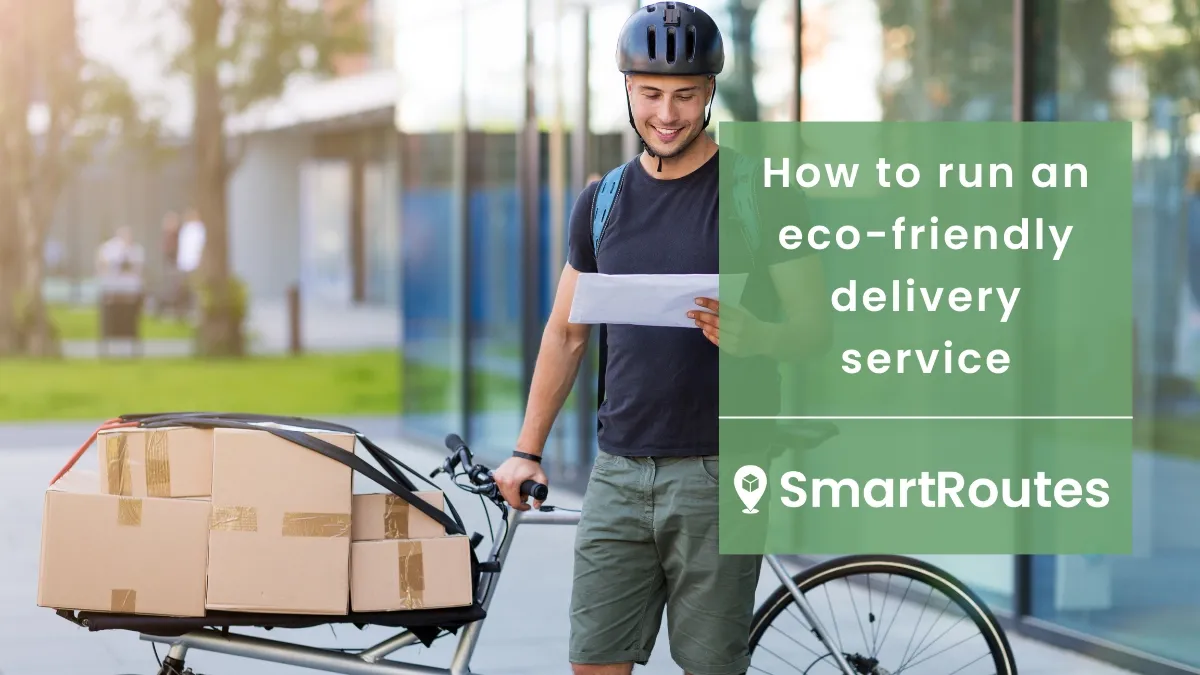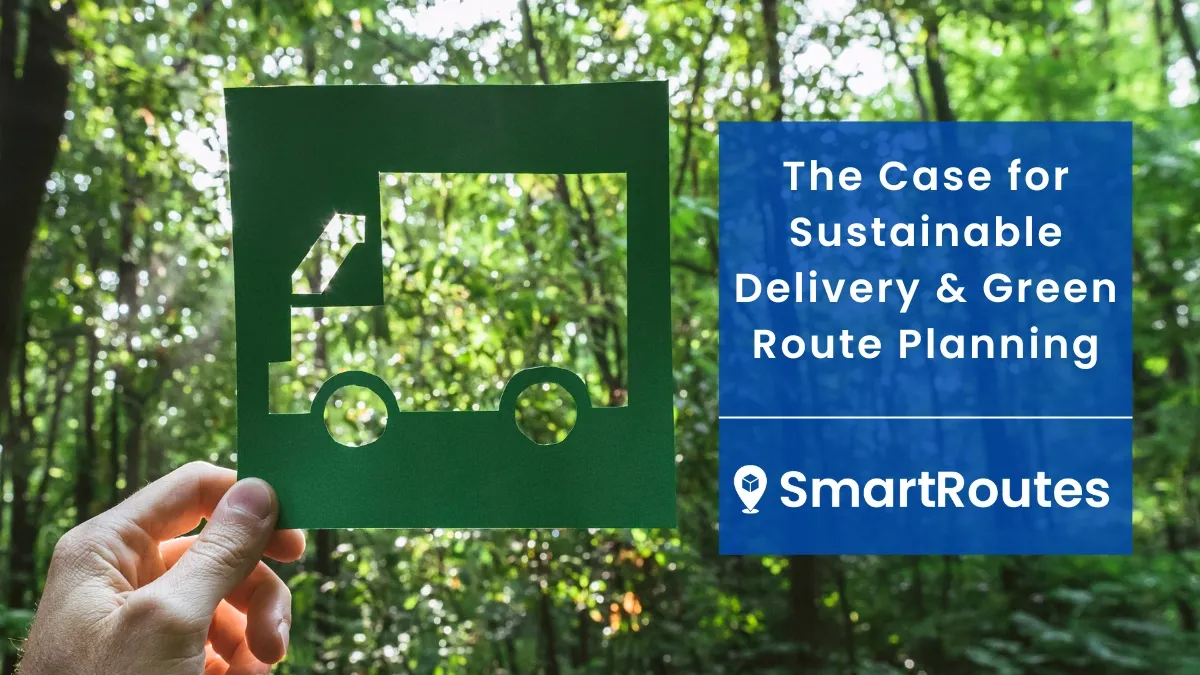Green Last Mile Delivery
The last mile is in a state of flux and moving to more sustainable models of delivery is now essential. Learn how here.

Climate change is the #1 biggest issue of our time and the single issue on which future generations will judge this generation of business people and politicians. It is incumbent on all of us as individuals and business people to contribute to net zero emissions as quickly as possible.
SmartRoutes works with companies worldwide to help them achieve their targets for carbon emission reduction in fleet management and we take our responsibility seriously. And last mile carrier tracking is a great way to improve the overall delivery experience.
Implementing a smart solution for delivery management saves logistics teams time and money with increased efficiency and reduced fuel costs. You will also increase control and insights into fleet management operations.
SmartRoutes Route Planning Software
Streamline your entire delivery process, all from one platform

Sustainable logistics report
According to a recent Accenture report:
- During the pandemic, consumer behaviors and retailers’ responses to them changed last-mile delivery’s carbon footprint, making it more sustainable.
- The last-mile supply chain made possible by local fulfillment centers could lower last-mile emissions between 17 and 26% through 2025.
- The last mile ecosystem is at a tipping point. Go one way, and it can extend these gains. Go the other way, and environmental impacts will worsen.
- Lasting change will require the ecosystem to work together to incentivize greener choices, rethink asset use, and harness data and analytics.
Benefits of sustainable logistics for your delivery team
- It doesn’t damage the environment: This is kind of the only reason that matters but we will make a list anyway. Protecting the environment for future generations, ie, our children and ourselves if we are lucky enough to be under 40.
- Improved brand image: According to an Ernest and Young survey 18% of consumers are ‘planet first’, meaning they prioritize the planet even over things like affordability or customer experience. Clearly your company looks better to consumers if you go down this road, particularly if you are out ahead of your competitors and not lagging behind them in implementing sustainability practices.
- Less pressure from customer expectations: It is clear that consumers are willing to pay more for green delivery methods (5% more) and wait an extra day for the delivery (76% of respondents).
- Greater profitability: Less focus on diesel vehicles, long delivery distances and super-fast delivery can lead to greater profitability. Electric or pedal powered vehicles, customer density and slower delivery can be cheaper to run and bring profitability gains.
Best practice in green last mile delivery
Route optimization
SmartRoutes' route optimizing algorithm will reduce cost per delivery by at least 33% versus traditional planning and allow you to factor in complex variables like time windows, load balancing, zonal territories and even vehicle variables to avoid missed deliveries and deadlines. Vehicles leaving the depot fully loaded results in greater profitability.
Fleet tracking
Visualize your delivery fleet with a live map to manage and adjust routes in real-time. Be more efficient and take the guesswork out of delivery operations. Be less dependent on a driver’s local knowledge by implementing a data-driven model of fleet tracking software.
Territory management
Create zones of delivery and allow the SmartRoutes AI to intelligently assign and manage work within this area. Route and territory optimization all in one.
Electric or zero emission vehicles and depots
It goes without saying that large diesel vehicles need to be phased out whenever you have the opportunity to replace them. There are a host of alternatives including vehicles that are hybrid or full-electric. If you are delivering in a dense area you might be able to use cargo bikes even for quite large packages. Cargo bikes have come a long way recently and the electric power in them allows them to be used for heavy loads over short distances. There is also growing potential in drone delivery especially for high-volume, light deliveries like food.
Attempt to use all the building possibilities like solar, wind and water treatment to reduce the impact of your depots.
Local fulfilment depots
The final, and perhaps most important point here, is to try to increase the number of local fulfilment centres you have. Rather than a model with a large depot serving a big area, think about a number of small depots serving local areas. This infrastructural change, in fact, underpins and makes possible all the other sustainability measures we are suggesting like electric vehicles, density of customers served, route optimization and so on. This is the big potential for the industry and Accenture’s report investigated the effects of this in particular. In three major cities, London, Sydney and Chicago they saw a reduction of between 17 and 20% in emissions as a result of localized fulfilment centres for delivery teams.
Green last mile delivery is possible
Together we can make a positive impact on the carbon footprint of your organization by prioritizing route optimization. Not only can you save on greenhouse gas emissions but you can also contribute to cleaner air and less toxins in the environment as a result.
Last mile operations, delivering directly to customers or to businesses, typically in smaller vehicles, is particularly problematic. The World Economic Forum suggested recently there would be a 36% rise in the number of delivery vehicles in the top 100 cities globally by 2030. Researchers estimate emissions from delivery traffic will increase by nearly a third, and congestion will rise by over 21%.
Among small businesses manual route planning is still the norm and it is up to larger corporations to lead the way in showing how much can be saved through using better processes to plan and optimize the most damaging area of their businesses to the environment. SmartRoutes tested with a client running a national home delivery network with 150 vehicles and they were able to achieve 33% reduction in miles driven and carbon emissions as a result.
Impact of implementing sustainable last mile delivery in your organization
If you employ drivers in your organization they will likely be driving between 12 and 18 thousand kilometers per year. If you factor in even a 20% reduction in miles driven as a result of algorithmic route optimization then you are greatly improving the status quo. Not only that but your drivers and your vehicle maintenance people will thank you. In hard number terms you are looking at 2,400 to 3,600 kilometers saved per driver. This equates to around four or five thousand pounds of carbon dioxide emissions into the atmosphere.

Or to put it another way every driver will save the equivalent of about 80 trees being planted annually. Not a bad return on investment for the Earth of a simple software implementation!
20% less
Fuel usage
4-5k lbs
Less carbon emissions
2-4k less
Kilometers driven per driver
80 trees
Equivalent planted per vehicle
Get Started with Green Last Mile delivery Software
If you're looking for a green delivery route planner, you can try a 7-day free trial of SmartRoutes or speak to one of our team today. We can get you up and running in minutes and help you to make the most of it from the outset.
Frequently asked questions
1. What is green last mile delivery?
Green last mile delivery refers to the environmentally conscious approach employed by businesses in the final leg of the supply chain, ensuring products reach consumers using eco-friendly and sustainable methods. This approach involves utilizing alternative energy vehicles (like electric vans, bicycles, or drones), optimizing delivery routes to reduce fuel consumption and emissions, and employing packaging materials that are recyclable or biodegradable. It aims to minimize the carbon footprint and environmental impact associated with the transportation of goods from distribution centers to end consumers.
2. What are the environmental benefits of green last mile delivery methods?
Green last mile delivery methods offer several environmental benefits. They significantly reduce carbon emissions and air pollution by using electric or hybrid vehicles powered by renewable energy sources. By optimizing routes and employing eco-friendly transportation options, these methods decrease fuel consumption and greenhouse gas emissions. Additionally, adopting sustainable packaging materials helps reduce waste and minimizes the environmental impact of discarded packaging.
3. What is the business case for doing green last mile delivery?
Embracing green last mile delivery offers multiple advantages for businesses:
- It aligns with consumers' growing environmental concerns, enhancing brand reputation and customer loyalty.
- It can lead to cost savings in the long run by reducing fuel expenses, maintenance costs, and potential regulatory fines related to emissions.
- Companies investing in sustainable practices often gain access to government incentives, grants, or subsidies, fostering financial benefits beyond the immediate cost reductions.
4. How do companies implement sustainable practices in their last mile delivery operations?
Companies implement sustainable practices in last mile delivery operations through various strategies:
- Transitioning to eco-friendly vehicles, such as electric or hybrid trucks, bicycles, or utilizing renewable energy-powered vehicles.
- Optimizing delivery routes through smart technology reduces mileage and idle time, cutting down fuel consumption and emissions.
- Adopting recyclable or biodegradable packaging materials, employing efficient warehouse practices, and partnering with eco-conscious logistics providers to enhance sustainability in their operations.
5. What role does technology play in enhancing green last mile delivery solutions?
Technology plays a pivotal role in improving green last mile delivery solutions. Advanced route optimization software uses real-time data and algorithms to plan the most efficient delivery routes, minimizing fuel usage and emissions. GPS tracking systems help monitor vehicle performance and driver behavior, allowing for adjustments to optimize efficiency. Integrating these technologies enables companies to achieve greater sustainability in their last mile delivery operations.
If you enjoyed this blog, you might also be interested in:








